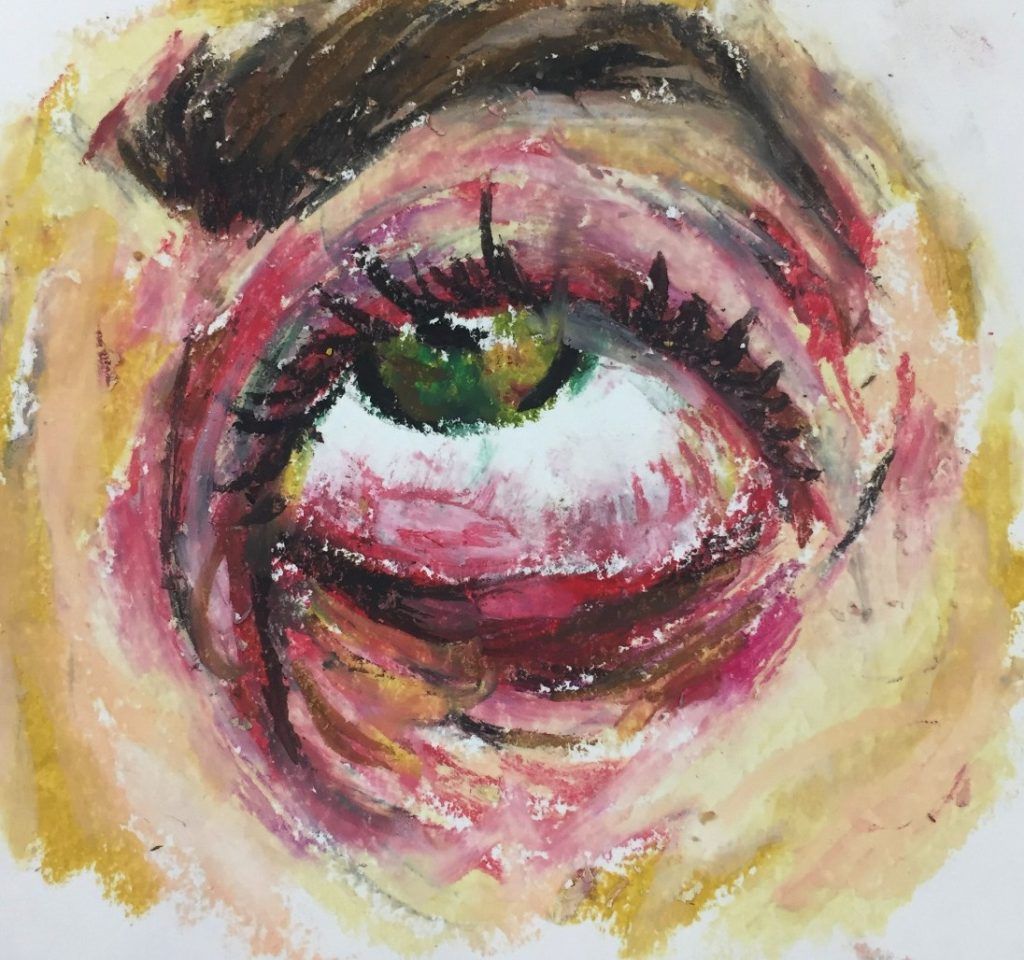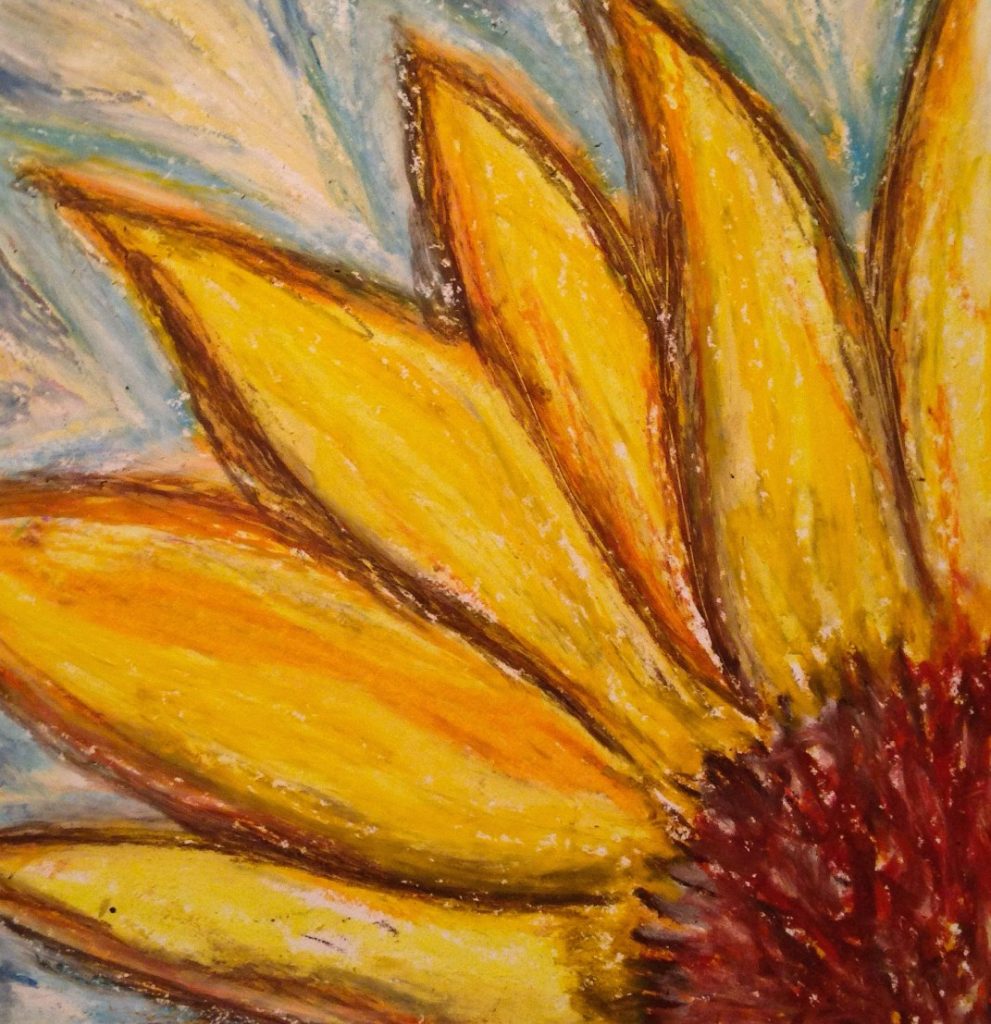Oil pastels offer a vibrant and versatile medium for artistic expression. Unlike crayons, they possess a richer, waxier texture that allows for beautiful blending and layering effects. Whether you’re a complete novice or looking to refresh your skills, this guide will equip you with the knowledge and inspiration to embark on your oil pastel journey.
Part 1: Gearing Up for Success

Choosing Your Tools:
Oil Pastels: Invest in a good quality set with a range of colors. Soft pastels blend more easily, while hard pastels offer sharper lines. Experiment with student-grade sets first, then graduate to professional ones as you gain experience.
Paper: Opt for heavyweight, textured paper specifically designed for oil pastels. This prevents the paper from tearing or buckling under the pressure of layering. Look for surfaces with a slight tooth, which helps the pastels adhere better.
Blending and Detailing:
Blending Tools: Your fingers are the most natural and readily available blending tools. Alternatively, blending stumps (tightly rolled paper) create smoother transitions. For more controlled blending, try tortillons (pointed blending tools).
Detailing Tools: Cotton swabs or tissues can be used to lift color or create soft edges. Sharpened pencils or even the pointed end of a pastel stick can add fine details or scratch through layers to reveal colors underneath (a technique called sgraffito).
Part 2: Mastering the Basics
Layering and Blending:

Layering is a fundamental technique when working with oil pastels. By applying the colors in thin layers, starting with lighter hues and gradually building up to darker shades, you can exercise better control over the intensity and vibrancy of your artwork. This stepwise approach helps prevent colors from becoming muddied and allows for greater precision in blending and shading. Additionally, layering enhances the depth and complexity of the final piece, enabling you to create rich and nuanced compositions that captivate the eye.
After establishing the base colors through layering, utilizing blending techniques further refines the visual impact of the artwork. Employing blending tools to soften edges and create seamless transitions between colors is crucial for achieving a polished and professional finish. Experimenting with different pressures and blending techniques enables you to explore a range of effects, from subtle gradations to more pronounced blending, adding depth and dimension to your oil pastel creations. By mastering layering and blending techniques, you can take full advantage of the unique properties of oil pastels and create visually stunning and dynamic works of art.
Linework and Shading:

Linework: Oil pastels can be used for both bold outlines and delicate details. Experiment with the broad side of the pastel for thicker lines and the pointed tip for finer work.
Shading: Use a variety of strokes to create depth and dimension. Try hatching (parallel lines) for smooth shading, cross-hatching (intersecting lines) for a textured effect, and scumbling (light, circular strokes) for a soft, blended look.
Part 3: Inspiration and Exploration
Subject Selection:
Still lifes provide a wonderful starting point for artists working with oil pastels. They offer the opportunity to practice fundamental skills in a controlled setting. Beginning with simple objects like fruits, flowers, or household items allows artists to focus on mastering basic shapes, exploring color palettes, and refining shading techniques. This genre also presents the chance to experiment with composition and lighting, providing a solid foundation for future artistic endeavors.
On the other hand, landscapes offer a broader scope for artistic expression. Capturing the beauty of nature through vibrant sunsets, rolling hills, or a peaceful forest scene allows artists to showcase the rich and diverse colors found in the natural world. Oil pastels excel at portraying the depth and texture of landscapes, and artists can experiment with techniques such as layering and blending to create atmospheric effects. Landscapes provide a great opportunity for artists to immerse themselves in an exploration of the natural world, offering endless inspiration and creative possibilities.

Abstract Art:
Embracing experimentation is crucial when working with oil pastels. It’s essential to let go of any inhibitions and allow your creativity to flourish. Don’t be afraid to push the boundaries and create abstract compositions inspired by emotions, music, or the interplay of color and texture. Oil pastels lend themselves beautifully to abstract expression, enabling you to create dynamic and emotive artworks that speak to the senses and the soul. Through experimentation, you can explore new techniques, develop your personal style, and uncover unexpected artistic avenues.
Furthermore, mixing oil pastels with other mediums offers an exciting opportunity to broaden your artistic horizons. Combining oil pastels with watercolors, acrylics, or even charcoal can result in captivating and expressive artworks that embody a diverse range of textures and visual elements. This approach allows for the creation of multidimensional and visually engaging pieces, showcasing the unique interplay between different mediums. By venturing into mixed media, you can produce truly unique and compelling artworks that showcase your creativity and innovation.
Part 4: Taking Care of Your Work

Fixing Your Artwork:
Utilizing a fixative spray is essential to safeguard your oil pastel artwork from smudging and dust. Once your creation is complete, gently apply a light coat of fixative spray to ensure its preservation. It’s advisable to select a workable fixative that not only sets the existing layers but also permits additional layering if further adjustments or enhancements are required. The fixative forms a protective barrier over the artwork, preserving the colors and preventing any unwanted blending or smudging caused by handling or environmental factors. It is essential to use the fixative spray in a well-ventilated area and apply it in light, even layers to avoid any potential over-accumulation and changes to the original texture of the artwork. By taking this precautionary measure, you can safeguard the integrity of your oil pastel creations and ensure their longevity for years to come.
Preserving Your Work:
Framing: Frame your finished piece using acid-free materials to protect it from light damage and ensure longevity. Consider using a mat to add depth and visual interest.
Storage: Store your artwork in a cool, dry place away from direct sunlight. This will prevent fading and warping of the paper.
With these fundamental techniques and a dash of inspiration, you’re well on your way to mastering the world of oil pastels. Remember, practice is key! Don’t be afraid to experiment, make mistakes, and have fun exploring this vibrant and versatile art form. There’s a whole world of creative possibilities waiting to be unleashed with an oil pastel in hand.


